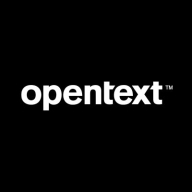

Jira and OpenText compete in the project management software category. OpenText appears to have the upper hand due to its integrated Agile management and comprehensive quality management features, offering valuable traceability in software delivery projects.
Features: Jira provides comprehensive project management capabilities focused on task tracking and bug management. It is supported by an active community offering numerous plugins. It features a powerful API and customizable workflows, and supports Agile methodologies with tools like Scrum and Kanban boards. OpenText integrates Agile management with end-to-end traceability, making it valuable for software delivery projects. It combines Agile management with a quality management approach, providing users with a single platform for application lifecycle management.
Room for Improvement: Jira users often find customization challenging and report a reliance on plugins to extend functionalities. Additionally, documentation could be more intuitive. OpenText, while comprehensive, is critiqued for being complex and costly, with a need to improve its support services and documentation for better customer satisfaction.
Ease of Deployment and Customer Service: Jira offers versatile deployment options including public, private, and hybrid clouds, as well as on-premises. Users benefit from extensive documentation, thus reducing the need for direct support. OpenText is oriented towards on-premises deployment but also supports private and hybrid cloud environments. Users suggest that its support system could be more responsive and efficient.
Pricing and ROI: Jira's pricing is competitive for smaller teams, though it can escalate with additional plugins. Its ROI is perceived as strong due to flexibility and low entry costs. OpenText's pricing is higher but justified by its integrated features and suitability for enterprise use. Its comprehensive project management capabilities provide significant value despite the higher initial investment.
A return on investment has been seen with Jira, as a lot of time has been saved in arranging tasks, converting software features into epics, tasks, and milestones, making it easy to track progress and plan future roadmaps.
It's always hard to measure ROI precisely, but overall, the development time usually pays off within a year through efficiency gains.
The ability to generate audit evidence with a single click saves ten days of work for ten people, enabling them to focus on other tasks.
Jira's customer support is one of the best I have ever dealt with because they respond quickly.
I did not face any issues with stability or upgrades.
Whenever there are issues, the internal Jira enterprise team is contacted directly.
Scalability for Jira is great, and it handles growth easily from 100 to thousands.
We can expand the number of servers and resources as required.
In my experience, Jira is stable, with around 99% uptime.
Focus more on improving API integration and automation tools, not just the design.
One feature that could improve Jira is the integration of AI capabilities, such as organizing Jira tasks autonomously with minimum human intervention and executing aggregations and clustering of these tasks.
To improve Jira, maybe some AI features could be added.
While it aims to be as flexible as possible for a large enterprise application, sometimes there are limitations that may not meet specific organizational needs.
Even if only five people from your team use a financial plugin, you still pay for all 100 seats.
OpenText ALM Octane is an expensive product.
You can build your own workflows and make it work exactly the way your team needs and integrate it with almost every third-party software.
For modern Agile practices, Jira is the most adapted tool in the industry.
Its ability to generate audit evidence with a single click is a significant advantage, as it saves considerable time and money compared to manual processes.
| Product | Market Share (%) |
|---|---|
| Jira | 13.3% |
| OpenText Software Delivery Management | 4.5% |
| Other | 82.2% |

| Company Size | Count |
|---|---|
| Small Business | 105 |
| Midsize Enterprise | 56 |
| Large Enterprise | 150 |
| Company Size | Count |
|---|---|
| Small Business | 7 |
| Midsize Enterprise | 2 |
| Large Enterprise | 32 |
Jira is a powerful cloud- and subscription-based application lifecycle and issue management solution. It is designed to aid users both in project management and in resolving any issues that arise at any point in the software development process. It is especially concerned with easing the ability of developers to collaborate.
Jira Benefits
Some of the ways that organizations can benefit by choosing to deploy Jira include:
Jira Features
Real-time notification feature. Users can set Jira so that it offers them notifications that contain critical information in real time. It can send users email notifications when pressing issues have been updated. They can also set it to notify them about tasks that may be due, or other similar events.
Reviews from Real Users
Jira is a powerful solution that stands out when compared to many of its competitors. Two major advantages it offers are its workflow engine and its highly customizable dashboard.
Bharath R., the tool implementation and project management lead at a financial services firm, writes, “I feel the strongest feature of Jira is its workflow engine. It empowers us to automate our workflows within our organization. It's the one characteristic of Jira which I think can help any organization, be it in any domain.”
Uday J., a staff engineer at a computer company, says, “Another thing that I like a lot about Jira is that in the dashboard, you can plug the modules that you want. You can enable certain sections. For example, you can show trend history, open Jira tickets, etc. Some of the managers have created a dashboard for each engineer.”
OpenText Software Delivery Management provides application lifecycle management with Agile and Waterfall support. It features intuitive interfaces, CI/CD integration, automated testing, and robust reporting, improving project management efficiency and usability.
Designed to enhance teams' productivity and streamline processes, OpenText Software Delivery Management integrates seamlessly with Agile methodologies. Its comprehensive backlog and requirements management, user stories, and test management make it a complete tool for managing the development lifecycle. The platform aligns with DevOps, providing traceability and extensive customization options. Traceability from requirements to deployments is enhanced, making it easier for teams to track progress. It offers integration with popular tools like Jenkins and JIRA, ensuring a unified approach to continuous delivery and testing management.
What key features does OpenText Software Delivery Management include?OpenText Software Delivery Management is implemented across technology-focused industries, supporting Agile processes like requirements management and defect tracking. Organizations use it to standardize development workflows and optimize continuous delivery integration, choosing it for its ability to support both Agile and Waterfall methodologies within application lifecycle management.
We monitor all Application Lifecycle Management (ALM) Suites reviews to prevent fraudulent reviews and keep review quality high. We do not post reviews by company employees or direct competitors. We validate each review for authenticity via cross-reference with LinkedIn, and personal follow-up with the reviewer when necessary.